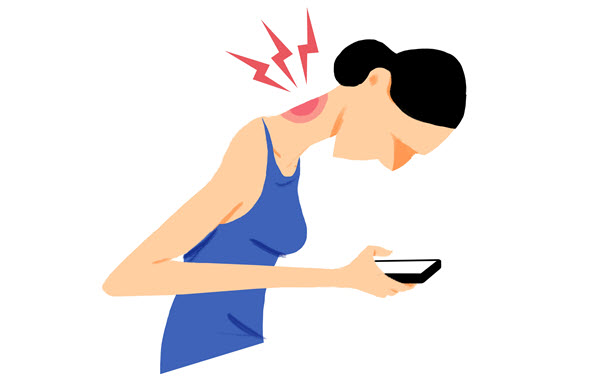
Tech neck is leading to the need for treatment of neck pain in younger people
Tech neck is leading to the need for treatment of neck pain in younger people https://bestpracticehealth.tv/wp-content/uploads/2023/11/hurt-tech-neck.jpg 615 380 Best Practice Health TV Best Practice Health TV https://bestpracticehealth.tv/wp-content/uploads/2023/11/hurt-tech-neck.jpgAs a practicing pain management physician Dr. Ann Cherie Foxx is used to seeing arthritis in older people. But lately, she’s been seeing something new: neck pain is young adults and adolescents after extensive use of electronic devices.
The clinical symptoms from ‘tech neck’ starts in the cervical spine and radiates to the shoulders. Sufferers have a strong sense of stiff neck muscles, and pain with spasm after sitting with bad posture.
As more and more people send increasing time in front of digital devices with head flexion to see their handheld device, the prevalence of tech neck is increasing. with imaging signs of arthritis. ‘Text neck’ makes sense on a mechanical level.
Too often, poor posture and smartphone use go hand-in-hand, which can be surprisingly hard on your neck, according to a 2014 study published in Surgical Technology International. Tipping the head forward and downward a slight 15 degrees is equivalent to adding 27 pounds of weight to your cervical (neck) vertebrae, the study found. A 60-degree downward gaze is comparable to hanging a 60-pound weight from your spine.
Source: National Library of Medicine – Text Neck Syndrome in Children and Adolescents
Younger people are inherently more flexible, and vulnerable to this problem. Tech neck can cause rounded shoulders, reduced mobility, pain in the neck, back, and upper shoulders, and headaches. As children are growing and developing, maintaining good posture is important for back strength and development. Consistently craning the neck downward can create bad habits and lead to injury and back problems later in life.
Source: Spine-Health.com – Text Neck Symptoms and Diagnosis
In today’s digital age, it’s no surprise that technology has become an integral part of our daily lives. From smartphones to laptops, we are constantly glued to our screens, and this has led to a new phenomenon known as “tech neck.” Tech neck refers to the strain and discomfort experienced in the neck and upper back as a result of prolonged use of digital devices.
Getting better begins with healthy screen habits: holding your phone at eye level and limiting screen time to rest the neck muscles is a good start. Ice packs alternating with moist heat and non steroidal anti inflammatory drugs may provide relief. If symptoms persist for more than 3 weeks despite these home treatment measures then you will need to see a healthcare provider. A medical or chiropractic physician is a good place to start. Those doctors will take your history, perform a physical examination, and order medical imaging.
In extreme cases when conservative measure have failed x-ray and MRI imaging show signs of arthritis, regardless of age, further treatment is needed. Radiofrequency ablation relieves 80% of neck pain in six out of ten people who have it for an average period of 10 months.
- Posted In:
- Knowledge Center
- Neck Pain






